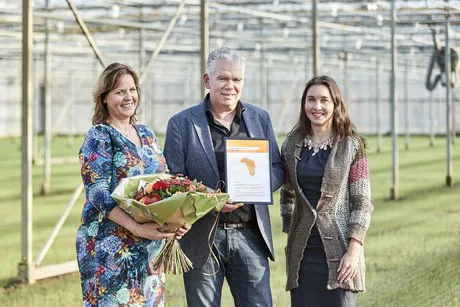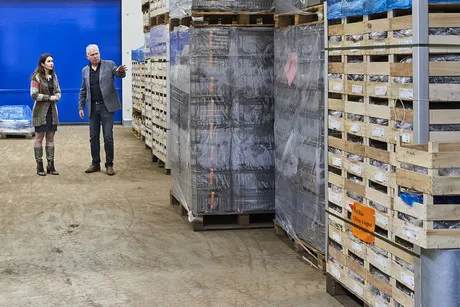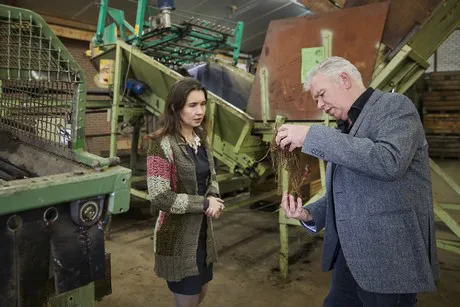Do you know that the little strawberry plant in your garden probably grew for years at the nursery it came from? And that Dutch leeks are whiter than their British counterpart?
Grower, Piet-Hein Kapteijns enthusiastically tells about all the specialties his family business grows - the cultivation of leeks, strawberries and Astilbe plants. His company, Plantenkwekerij Kapteijns, uses as little fertilizer as possible. After all, worms and fungi do this job. Kapteijns put agriculture in the Dutch region of Brabant on the global map. Last month, they won an award, the Agrofoodpluim.

Kapteijns' plant material develops into full-grown leeks and strawberries. This growth occurs after they have been delivered to clients throughout Europe.
For example, Kapteijns' strawberry plants grow from cuttings to a yearling plant. They then 'rest' at -1.5 degrees Celsius in a cooling cell for the winter. After that, they grow in full soil for another season. At the next grower, the strawberry plants then develop into fully-fledged plants. Only after four years, the farmer or consumer can harvest strawberries from this plant.
Greenhouse UV lights
Kapteijns is a Dutch company that delivers plant material. They have been growing these plants, fertilizer-free, in a greenhouse for ten years now. Outside, in the full soil, the use of fertilizers has dropped to a third in five years. Here, Kapteijns tries to repair and maintain as much of the natural soil life as possible.
By, for example, plowing less, the soil life is not damaged as much. At the same time, natural compost ensures a better soil structure and more humus in the soil. This compost consists of people's and municipalities' pruning waste, verge cuttings, and even grape must. This means this process is extremely circular.
Kapteijns also adds a special fungus called Mycorrhiza to the soil. “This has practically disappeared due to intensive soil cultivation. Usually, these kinds of fungi occur naturally in the soil. You can still find them in woods and hedges," explains Piet-Hein.
This fungus ensures that the nutrients found in the soil successfully make their way to the plant. They do this in return for the sugars the plant roots secrete. In this way, the plants get strong roots, and the soil remains fertile.
Insects and diseases are also controlled at the source. Innovative methods such as a heat treatment known as CATT is used for this. Remote-controlled robots, fitted with UV lights, are used to combat fungi growing on the plants in a natural manner.

Green manure and contradictory rules
This nursery alternates its crops with green manure crops. Piet-Hein sows marigolds or, for example, Japanese oats. Marigolds chase off harmful nematodes from the soil. They also attract a lot of bees and bumblebees. In addition, they prepare the soil for the next crop. To offer crops of the correct quality, many rules need to be followed.
Piet-Hein says, "There are numerous European and Dutch regulations concerning fertilizer and pesticide use. Sometimes the retail sector or clients from abroad have additional demands too. These can contradict each other, sometimes making our job difficult."
Some types of pesticides are banned in the Netherlands but, for example, in France, they are not. Kapteijns, itself, chooses to use as few chemicals as possible.

Continuous innovation on the international market
Kapteijns not only contributes to healthy, high-quality food. They also bring their know-how about soil life. "But we still know very little about soil biology," says Piet-Hein. There is, therefore, still a lot to be learned.
The manner in which Kapteijns works, adds economic and environmental value to the Brabant area. This is why, Anne-Marie Spierings of the Provincial Executive awarded the 'Agrofoodpluim' to Kapteijns: “We think it is important that our agricultural sector is successful. It must be able to continue to deliver healthy, high-quality product," she says.
"At the same time, we want to work carefully with our natural resources, our water, and our beautiful environment. Kapteijns shows how horticulture and nature can bring the best out in each other. This is an ongoing process. By sharing their knowledge, businesses in the entire chain can learn from each other. That deserves a Agrofoodpluim award."
For more information:
North Brabant Province
www.brabant.nl

